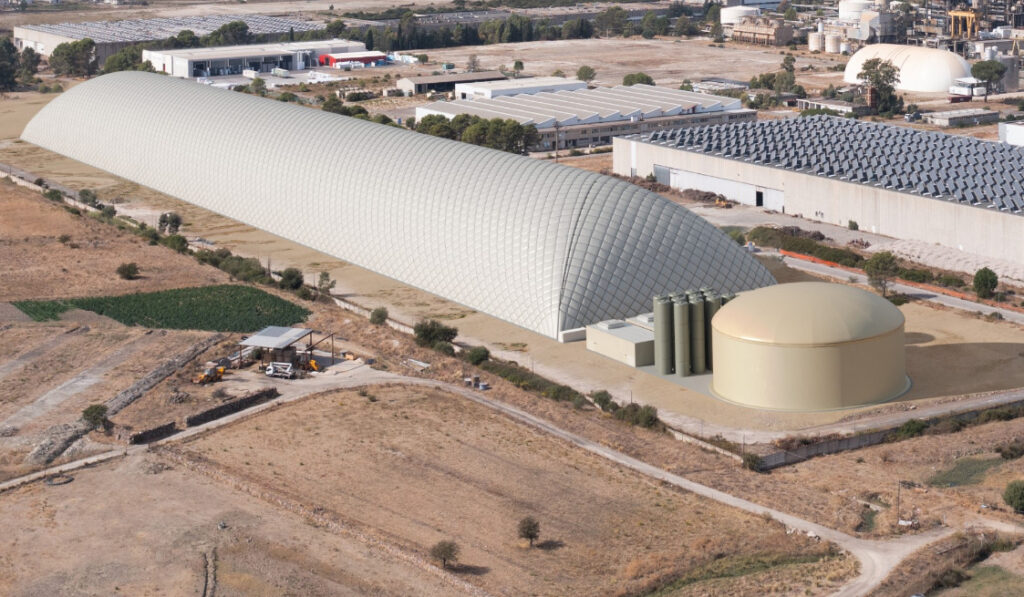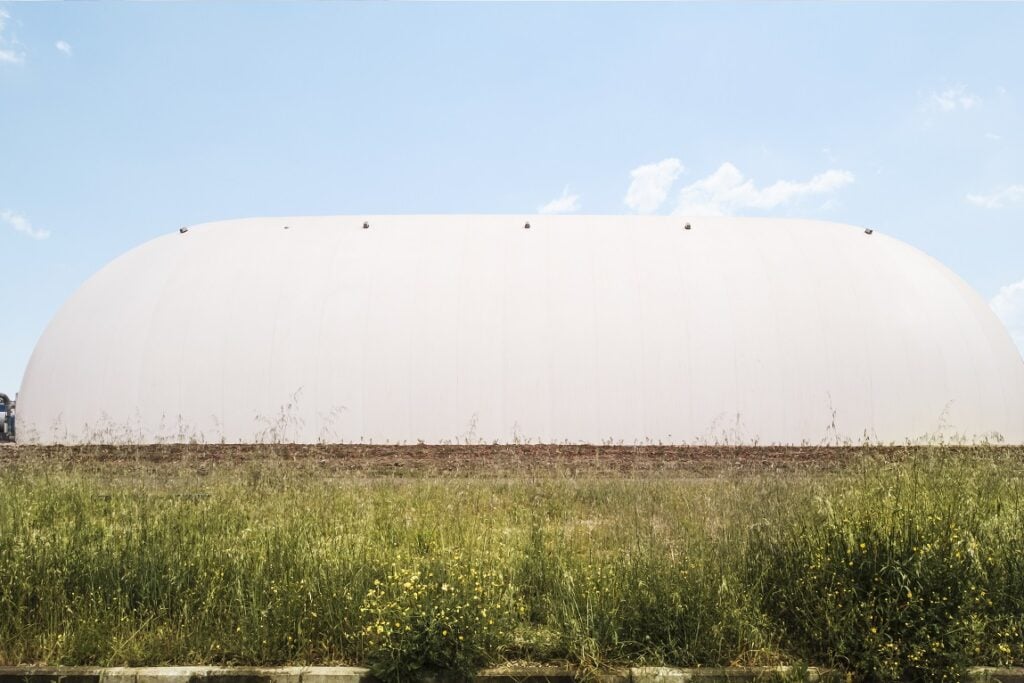
Energy-Storage.news Premium learns why Energy Dome, maker of the proprietary CO2 Battery for long-duration energy storage, has moved into the project business.
“I would encourage anybody who’s had a lithium-ion tolling offer to call us, wherever they are. We can meet or beat, I’m confident.”
Enjoy 12 months of exclusive analysis
- Regular insight and analysis of the industry’s biggest developments
- In-depth interviews with the industry’s leading figures
- Annual digital subscription to the PV Tech Power journal
- Discounts on Solar Media’s portfolio of events, in-person and virtual
Energy Dome’s Ben Potter is speaking with Energy-Storage.news at the Energy Storage Summit EU about the Italy-headquartered startup’s business models.
Our in-person interview comes exactly a year after the previous one and takes place at the same event. But whereas our conversation in early 2023 focused largely on the technology underlying Energy Dome’s CO2 Battery, this time out, attention turns to how the CO2 Battery will participate in the market.
To give the briefest of recaps, the CO2 Battery is the brainchild of Claudio Spadacini, an entrepreneur who combined turbines, compressors, and thermodynamics with relatively small amounts of carbon dioxide as the storage medium.
Carbon dioxide (CO2) is adiabatically compressed and then liquefied to charge with energy. The gas is then evaporated as the system discharges, with heat created during the compression process also stored and then used to expand the gas. The CO2 is driven through turbines, generating electricity.
The company claims that the CO2 Battery is able to provide long-duration energy storage (LDES) cost competitively and can be made relatively easily, due to its use of off-the-shelf components and manufacturing and engineering techniques from existing industries. It also experiences no degradation in the way lithium-ion batteries do at the cell level, Energy Dome says.
Late last year, the company closed financing for its initial first-of-a-kind 20MW/200MWh project in Sardinia, Italy, where the first megawatt-scale demonstration project was also built a couple of years back. According to Potter, it will be the first of many standardised units that basically look identical, including a project in Wisconsin, US, with utility Alliant Energy, also 20MW with 10-hour duration that is being supported with funding from the government Department of Energy (DOE) as one of a number of long-duration energy storage (LDES) large-scale pilots.
Long-term revenues for provider, market upside for customer
In the past year, Energy Dome has added a build, own, and operate (BOO) side to its business, alongside the existing business model of producing and selling CO2 Battery systems as an original equipment manufacturer (OEM).
Potter says the new BOO division, or ‘Energy Storage as a Service’, which he leads as its chief operating officer (COO) will “develop, fund, build and operate assets for our customers, which enter into long-term agreements”.
“There are customers who more naturally fit into an OEM direct equipment purchase or supply arrangement, and there are customers who actually don’t want to incur the capex themselves, and prefer just to shift their capex to opex and enter a long-term lease type agreement,” Potter says.
“So those kinds of customers want capacity, they want availability and the guarantees associated with it, but they don’t necessarily want to have that asset on their balance sheet.”
Potter claims it to be a simple business model, where the provider takes the technology risk of deploying a new technology into the market, but the customer bears the market risk. What that means is that Energy Dome will enter a long-term tolling agreement for a fixed dollar amount per megawatt, per month, over a 20-year term.
“We provide the CO2 Battery, we provide the long-duration energy storage. We operate it for the customer, so we charge, and we discharge, but they’re responsible for dispatch optimisation. So they’re responsible for sourcing the energy, and then they’re responsible for trading it and actually deploying it into the market.”
A few weeks ago, Energy-Storage.news Premium spoke with Jon Norman, president of Canadian advanced compressed air energy storage (A-CAES) provider Hydrostor. Hydrostor has also moved into developing projects that will use its own proprietary technology as well as selling the solution.
The two may not be directly comparable given the multiple gigawatt-hours in scale for each of Hydrostor’s projects, but in both cases the provider has taken on the technology risk, with the help of some high profile investors.
New tech leaning on familiar strategies
As mentioned above, the Energy Dome tech is designed using familiar components and technologies from existing industries, and in a way, the new BOO division works along the same lines.

Tolling structures are very common in the infrastructure industry and are what makes the CO2 Battery bankable because it enables a long-term fixed revenue for Energy Dome from investment grade off-takers that could include investor-owned utilities (IOUs) or large independent power producers (IPPs).
That bankability, “allows us to speak to infrastructure funds, private equity firms, etc., to be able to raise capital to deploy it into those projects,” with the company seeking co-investors to raise funding.
Those types of tolling model are common not just in infrastructure, but in “traditional power” contracts too – thermal generation assets like combined cycle gas turbines (CCGTs), but also pumped hydro energy storage (PHES) assets as well.
It’s a “natural leap” that the customer is very comfortable with, Ben Potter claims, because the CO2 Battery operates in a very similar way to PHES, while the components are similar to technologies more commonly used in thermal generation.
“The customer gets a long-duration energy storage asset that doesn’t degrade and gets performance guarantees and availability guarantees. So they have confidence on when they’re going to be able to charge and discharge and get the power back.
“Basically, it depends on the market where they’re in, but if you take a vertically integrated utility, for instance, those utilities want buffering, they want an asset like this in their portfolio, which allows them to decarbonise, but just on a normal unit-by-unit basis.”
There are also tolling agreements in the lithium-ion (Li-ion) battery energy storage system (BESS) space, most commonly in Southwestern and Southern parts of the US.
That enables Energy Dome to model like-for-like comparisons with its own offerings, and Potter claims the CO2 Battery stacks “very, very favourably” against the popular encumbent in that respect.
This is, he says, “because we don’t have to augment the power, so after 10 years, you don’t have to repower it and replace lithium-ion cells, because our components don’t degrade, the economics stack very, very favourably”.

